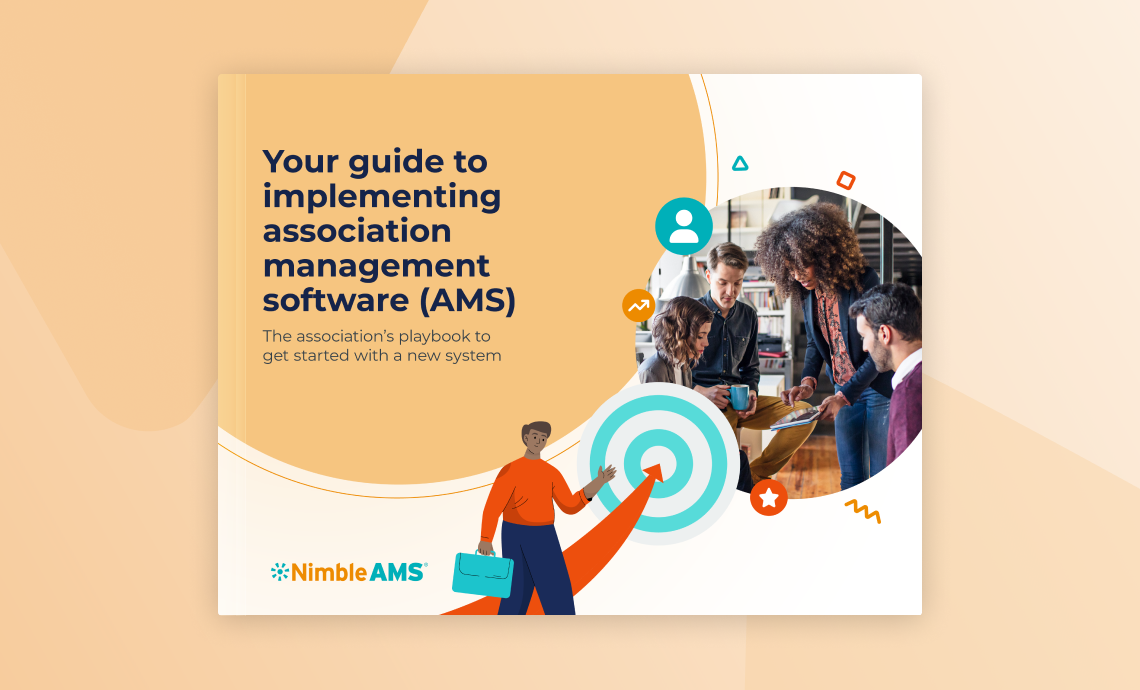Is your association in the market for new software? The road to implementing new technology can be a long one, but your organization can smooth the way with business process mapping.
Read our blog to learn everything you need to know about business process mapping and prepare your association for implementation success.
What is business process mapping?
A business process map or a process flow diagram visually outlines the steps it takes for your association to complete a process. The process may be related to membership, event registration, or learning content purchases. Regardless of the process, your association can use this tool to help you search for new technology or to drive a successful software implementation.
Why should your association use business process mapping?
You may think you completely understand your organization’s processes. However, using business process mapping can help your association identify areas for improvement within your current processes, by highlighting redundancies, potential problems, and solutions.
Giving your staff and leaders a frame of reference for your current processes will empower them to find the best software for your entire association. When it comes time to implement your new association management software (AMS), having all your processes visually documented will help your new software vendor meet your unique association needs. You can work with your software vendor to use your business process maps to model a new process supported by your new software.
How to map out your association’s processes
Now that you know why you should leverage business process mapping, here are five tips to begin outlining your processes and prepare for a successful implementation:
1. Identify your process
Before you start mapping, clearly define the scope of your process, establishing what you hope to accomplish. Doing so will help you set limits for the specific business process map, ensuring you don’t go beyond what the process entails.
For example, perhaps you wish to map your membership processes. To effectively detail your membership processes, you’ll need to outline the processes for joining, renewal, and recruiting new members. If you have different membership levels, you’ll also want to organize the membership joining process for each tier.
2. Gather details
Remember, the goal of process mapping is to clearly break down your process to offer insight and clarity for staff and leaders. As you work to compile your process map, observe the steps involved in precise detail.
Consider how your current process impacts your members, staff, and stakeholders. Doing so will ensure your process map ultimately helps to improve your organization’s effectiveness.
3. Ask staff and stakeholders
To better understand the process you’re mapping, interview your staff, members, and key stakeholders to gain further insights.
For example, if you plan on mapping your membership process, you should interview your membership team about the intricacies of the process. You could also consider interviewing recent and long-term members to gain their feedback on the joining and renewal processes. Speaking with your stakeholders can help to uncover inefficiencies and present a new option to increase effectiveness.
4. Create your process map
With all the information you’ve gathered, including specific process details and stakeholder interviews, you’ll be ready to start mapping your processes. Try keeping the process map as simple as possible to reduce complexity and ensure your staff and leaders can follow the process. For example, if you choose to map your membership joining process, only include key steps for how a member joins and how staff support the joining process.
5. Conduct your process review
With your process clearly mapped, you’ll be prepared to conduct an in-depth analysis of your key processes. As you seek to understand your processes, you’ll be in a better place to discover the best software to support your entire organization. With a new AMS, your association can redefine its processes, make informed changes, and empower both staff and members.




